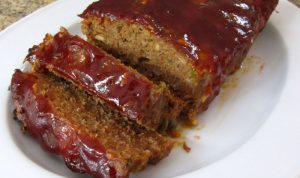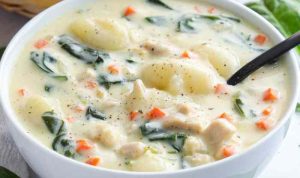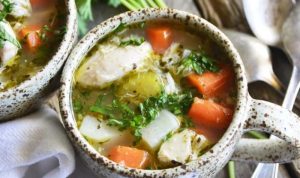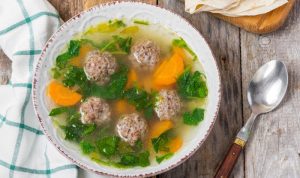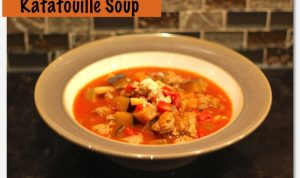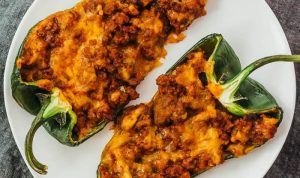Dumplings for Soup: A Culinary Journey
Dumplings for soup recipe – Dumplings, those delightful pockets of savory or sweet fillings encased in dough, have graced soup bowls across cultures for centuries. Their history is as diverse as the cuisines they enrich, evolving from simple necessity to culinary artistry. This exploration delves into the world of dumplings in soup, covering everything from their rich history and diverse forms to the art of crafting the perfect broth and achieving the ideal dumpling texture.
A Brief History and Diverse Forms of Dumplings in Soup
The origins of dumplings in soup are ancient and multifaceted. Early forms, often simple dough balls dropped into broth, appeared in various cultures independently. Chinese cuisine boasts a long tradition of soup dumplings, with variations like wontons and jiaozi. In Japan, the delicate gyoza are a staple, while in Italy, tortellini and ravioli find their place in comforting broths.
These examples highlight the versatility of dumplings as a soup ingredient, adapting to local flavors and culinary traditions. Their simple construction allowed for endless variations in filling and wrapper, making them a flexible and adaptable food source across various cultures and economic levels.
Types of Dumpling Wrappers
The choice of dumpling wrapper significantly impacts the final texture and taste of the soup. Different doughs offer unique characteristics, influencing the cooking method and overall sensory experience.
| Wrapper Type | Thickness | Elasticity | Cooking Time (approx.) |
|---|---|---|---|
| Wheat (e.g., wonton) | Thin to medium | High | 3-5 minutes (boiling) |
| Rice (e.g., Chinese rice dumplings) | Medium to thick | Moderate | 5-7 minutes (boiling/steaming) |
| Potato | Medium | Low | 5-7 minutes (boiling) |
| Spinach | Medium | Low | 5-7 minutes (boiling) |
Dumpling Fillings for Soup
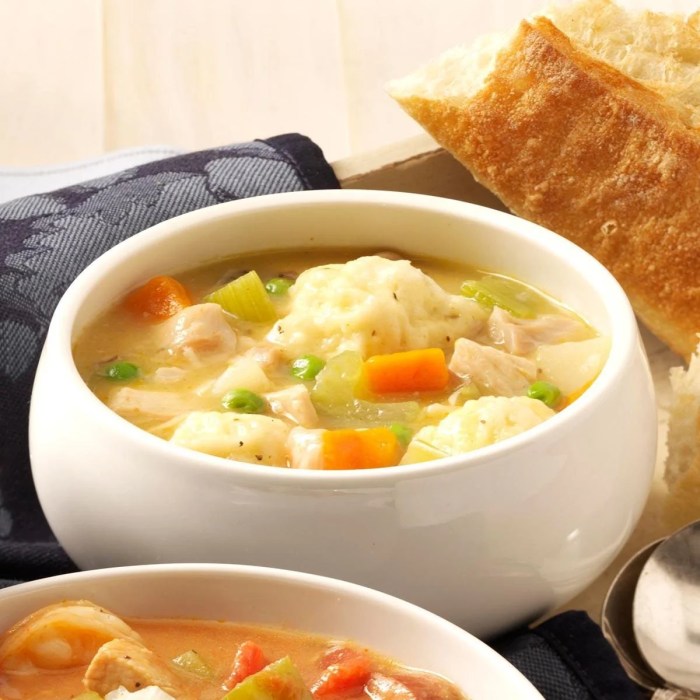
Source: tmbi.com
Crafting the perfect dumpling for your soup requires careful consideration of the dough and filling. A similar level of attention to detail is needed for a truly delicious broth, like the one found in this excellent recipe for albondigas soup , which showcases how flavorful meatballs can elevate a simple soup. Ultimately, whether you’re making dumplings or meatballs, the key to a great soup lies in the quality of the ingredients and the care taken in their preparation.
The heart of any dumpling lies in its filling. Savory and vegetarian options abound, offering endless possibilities for flavor combinations. Seasoning plays a crucial role in balancing the flavors and creating a harmonious taste profile. The balance of salt, umami, and subtle sweetness creates a delicious contrast with the broth.
- Pork and Chive: Ground pork, finely chopped chives, soy sauce, sesame oil, and ginger.
- Chicken and Mushroom: Cooked chicken, finely diced mushrooms, garlic, soy sauce, and white pepper.
- Shrimp and Water Chestnut: Minced shrimp, finely chopped water chestnuts, scallions, and a touch of fish sauce.
- Vegetarian: A mixture of finely chopped vegetables such as carrots, cabbage, and mushrooms, seasoned with soy sauce, ginger, and garlic.
- Spicy Kimchi: Fermented kimchi, seasoned with gochujang and sesame oil.
Soup Broth Recipes for Dumplings
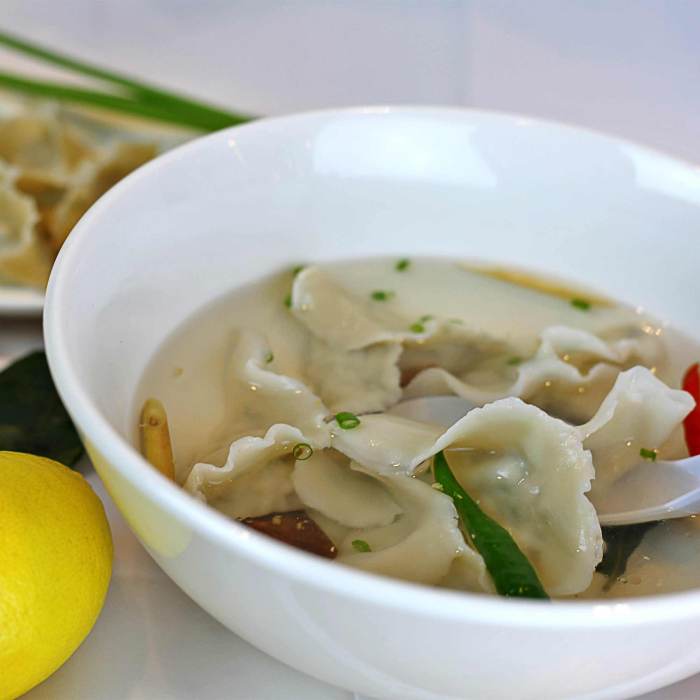
Source: secretrecipebd.com
The broth forms the foundation of the dumpling soup experience. A well-crafted broth complements the dumplings without overpowering their delicate flavors. Here are three diverse broth options:
- Chicken Broth:
- Combine chicken bones, carrots, celery, onion, and ginger in a large pot.
- Cover with water and bring to a boil.
- Reduce heat and simmer for at least 2 hours, skimming off any foam that rises to the surface.
- Strain the broth and season with salt and pepper to taste.
- Vegetable Broth:
- Sauté chopped vegetables (onions, carrots, celery, mushrooms) in olive oil until softened.
- Add vegetable broth or water, along with herbs like thyme and bay leaf.
- Simmer for at least 30 minutes to allow the flavors to meld.
- Season with salt, pepper, and a touch of soy sauce or miso paste.
- Pork Broth:
- Brown pork bones in a large pot until golden brown.
- Add water, along with aromatics like ginger, garlic, and star anise.
- Simmer for at least 2 hours, skimming off any foam.
- Strain the broth and season with salt and pepper to taste. A splash of soy sauce adds depth.
Cooking Methods for Dumplings in Soup
The cooking method significantly affects the final texture and taste of the dumplings. Boiling, steaming, and pan-frying each offer unique advantages.
Boiling yields soft and tender dumplings, ideal for delicate wrappers. Steaming produces light and fluffy dumplings, preserving their shape and preventing them from becoming soggy. Pan-frying creates a crispy exterior, adding textural contrast to the soup.
Serving Suggestions and Variations, Dumplings for soup recipe

Source: tasteofhome.com
Garnishes and accompaniments elevate the dumpling soup experience. Chopped scallions, cilantro, or sesame seeds add visual appeal and enhance the flavors. A drizzle of chili oil or a squeeze of lime introduces a touch of spice or acidity.
| Soup Variation | Regional Influence | Unique Ingredients |
|---|---|---|
| Spicy Sichuan Dumpling Soup | China | Doubanjiang (fermented chili bean paste), Sichuan peppercorns |
| Miso Soup with Vegetable Dumplings | Japan | Miso paste, wakame seaweed, tofu |
| Tortellini in Brodo | Italy | Parmesan cheese, fresh herbs (parsley, basil) |
Visual Representation of Dumpling Making
Creating dumplings from scratch is a rewarding process. The wrapper preparation begins with kneading a smooth, elastic dough, typically made from flour and water. The dough is then rolled out thinly, using a rolling pin or pasta machine, and cut into uniform circles. Filling and shaping the dumplings involve carefully placing the filling in the center of each circle, and then folding and sealing the edges to create a variety of shapes, from simple half-moons to intricate pleats.
The precise folding technique depends on the type of dumpling being made. Imagine the smooth, yielding dough, the satisfying texture of the filling, and the careful precision of the folds as you create each individual dumpling. The visual process is one of artistry and culinary precision, a dance between hands and dough.
Quick FAQs: Dumplings For Soup Recipe
Can I freeze leftover dumplings?
Yes, uncooked dumplings freeze well. Place them on a baking sheet to freeze individually before transferring them to a freezer bag to prevent sticking.
How do I prevent my dumplings from sticking together?
Lightly dust uncooked dumplings with flour or cornstarch before freezing or cooking to prevent sticking.
What if my dumplings fall apart while cooking?
This usually indicates the dough is too thin or the filling is too wet. Try using a thicker dough or reducing the moisture content in your filling.
Can I use store-bought broth?
Absolutely! Store-bought broth is a convenient option, but homemade broth often offers a richer, more nuanced flavor.

